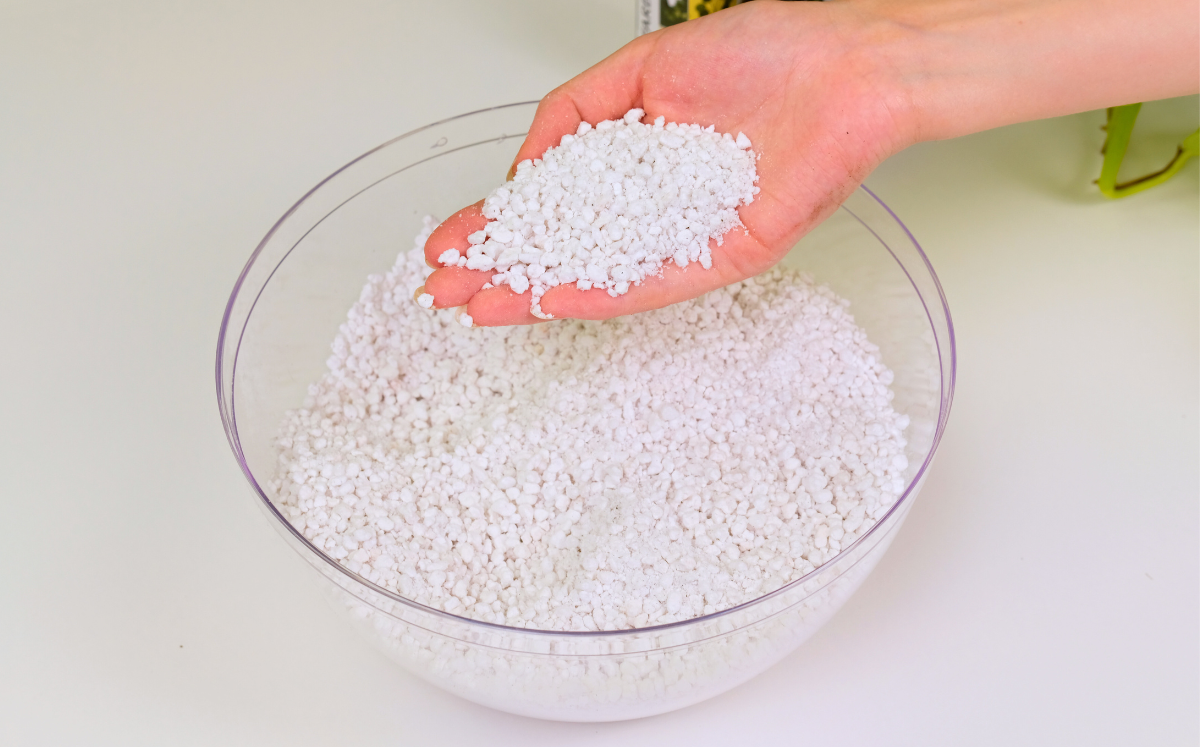Finding the right soil for your plants is not as easy as you might initially think. Most soil mixes that you get in the garden center are not suitable for your houseplants like Monstera, Philodendron and Co. But what's wrong with the soil you buy and how do you get better soil?
Why is conventional soil not good?
The finished soil from the garden center or hardware store consists of many fine components. This allows the earth to hold a lot of water and, above all, for a long time. Doesn't sound bad at first. This water “stands” at the bottom of the pot. In this zone the air is almost completely displaced. The result is that your plants can no longer breathe and the roots die. Root rot occurs. In addition, the quality of the finished soil is often poorer. There may be fungi or other pests in the soil, which you can then bring home to your healthy plants.
If you don't want to bake your soil before each repotting, you should mix your soil yourself. And we'll tell you how. Our substrate mix is suitable for all house plants such as Philodendron, Ivy, Alocasia, Monstera and Co. The best place to find the ingredients needed for the airy substrate mix is on the Internet, as most garden centers or hardware stores do not have all the ingredients in their range.
Rough components
These include pine bark or coconut chips made from coconut fibers. These are coarse-grained and ensure better air circulation in the soil. They also improve root development and ensure thicker and stronger roots thanks to their coarse surface.

Medium coarse components
The medium-coarse components include perlite, pumice and expanded clay. You can use some of all three or choose one ingredient. That's a matter of taste, because all three of them work. They also improve air circulation and ensure that your plants can breathe. Since they can't absorb and store much water, your soil will dry out more quickly than with traditional soil. This prevents waterlogging from forming and prevents your roots from rotting.

Fine components
The fine components include coconut soil and worm humus. The coconut soil also ensures an airy soil mix because it is not as muddy as normal soil. To ensure that your mix gets a few more natural nutrients, it is best to mix in worm castings. This is rich in nutrients and was obtained through composting. Otherwise, peat also works, although we do not support the mining of peat as it emits a lot of CO2 and destroys the peat ecosystem. Our recommendation is to use one part coconut soil and one part vermicompost.

The right ratio
In a large container, mix 5 parts of your large components, 2 parts of your medium-sized components and 2 parts of your fine components (according to our recommendation 1 part coconut soil and 1 part worm castings). The individual components are interchangeable. You should just make sure that the ratio of coarse, medium and fine ingredients remains the same. Remember to let the coconut soil soak in water beforehand. The substrate should fall apart immediately after being squeezed in your hand, then it is airy enough. And your self-mixed substrate is ready.
Take a closer look at all the steps in this video!
Important: The right nutrient supply for your plant
Ready-made planting and potting soils are already pre-fertilized, which is why it is particularly important to ensure sufficient fertilization right from the start when using your own mixed substrate! But no matter what substrate or soil your plants are in, plants absorb the nutrients from it through their roots and at some point these are used up. Then it's time to fertilize so that your houseplants can grow well. During the growing season from March to October, it is recommended to use an organic fertilizer every two weeks. You can find the right organic liquid fertilizer for your houseplants in our shop. If your houseplants get too big or too bushy, you can cut them back in spring. This encourages new growth and the cut shoots can be placed in water to develop new roots.

























